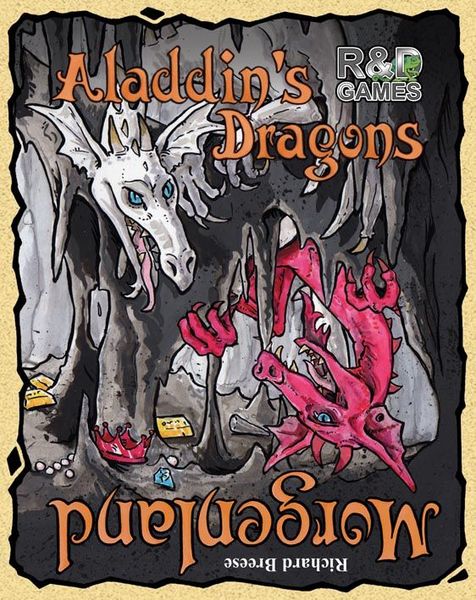Aladdin’s Dragons (2009) Board Game
Aladdin’s Dragons is a board game designed by Richard Breese and published by R&D Games in in 2009. The game is set in an Arabian fantasy world where players take on the roles of thieves competing to steal treasures from the Sultan’s palace. With a unique mix of auction/bidding, hand management, and secret unit deployment mechanics, Aladdin’s Dragons offers a strategic and engaging gameplay experience.
Game Components of Aladdin’s Dragons
How To Setup Aladdin’s Dragons
To set up the game, each player starts with a shield, a set of numbered tokens, and a pile of treasures. The game board is laid out, and treasures are placed according to the cards drawn at the beginning of each round. These cards specify the distribution of treasures across the board. Each player places their camel token to determine the starting player.
Gameplay Mechanics and Game Objective
Player Experience
Players take turns placing their tokens to bid on treasures and artifacts. The game progresses through the city, with different locations offering various benefits such as magic cards, treasure trades, and access to the palace. The palace guard must be overcome by bidding higher than the guard’s value or by bribing the guard with treasures. Artifacts won can provide special abilities and advantages in subsequent rounds.
Pros
Cons
Personal Thoughts on Aladdin’s Dragons
Aladdin’s Dragons is a game for those who enjoy strategic planning, resource management, and a bit of luck. It’s ideal for players who can appreciate the intricacies of blind bidding and area control. While it may not be for everyone, particularly those who dislike blind bidding, it remains a favorite among many for its unique mechanics and thematic execution. The game’s complexity and depth make it suitable for experienced board game enthusiasts looking for a challenging and rewarding experience.
We are supported by our audience. When you purchase through links on our site, we may earn an affiliate commission, at no extra cost for you. Learn more.

